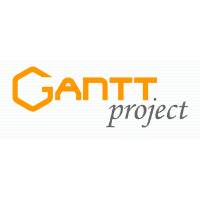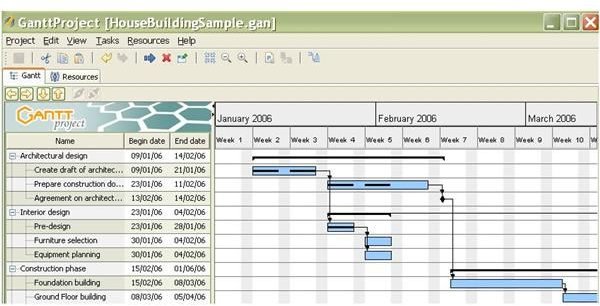

It is important to note that there is no single best way of constructing a project schedule.

Look at the sample Gantt chart above and identify the different elements. In such cases, the dependencies are generally marked by an arrow connecting one task to another. On a large project, it is quite common for some tasks to depend on the completion of one or more other tasks. When a Gantt chart is used as part of a progress report for an ongoing project, you will also find the status of each individual item indicated on the horizontal connectors. No matter whether it is an individual project, or a team project, in a Gantt chart you should find different bars representing the duration of the different tasks in the graph area, each indicated by a start and an end date. The vertical axis represents the individual tasks that make up the project.įor a team project, resources information is often included to indicate which team member(s) in a team is responsible for a particular task or number of tasks. In general, a Gantt chart is constructed with the horizontal axis representing the complete timeline of the project, broken down into increments (days, weeks, or months). There are many different forms/variants of Gantt charts. Read through the Wikipedia page on Gantt charts and answer the following questions: Elements in a Gantt Chart This work schedule can be displayed in the form of a Gantt chart, which represents a form of concise and easily interpretable summary of the overall workflow of the project, even if, of course, on cannot represent all the necessary information concerning the project in such a format. Very often, a work flow schedule is drawn up as the result of a technical discussion in order to identify and plan the start and end dates of the project, and to be able to monitor its activities. Some of thes stages may be dependent upon the completion of earlier stages, too, while some may simply be able to run in parallel and can be started immediately. These stages may often involve different forms of research, the acquisition and testing of potential materials or other resources for the project, designing initial prototypes/plans/blueprints, to delivering a final ‘product’. On top of this, the team (leader), following any potential timelines already provided by the client, needs to draw a realistic timeline for the project, determining the stages the project might be separated into. Managing the Work FlowĪssigning different roles to the members of the team obviously isn’t enough in planning and shaping a project.

This knowledge should enable him/her to assign suitable tasks or even management roles to the team members.īased on your earlier planning and the ideas, rethink the distribution of roles and (sub-)tasks for your projects.

Distributing these is generally the job of the project manager/team leader, who not only needs to be aware of the different resources required in order to be able to carry out the project, but also of the different areas of expertise that each individual team member brings into the project. On every project, there are a variety of different tasks and responsibilities that need to distributed in order to make the project mangeable. Managing the Project Resources Identifying Project Roles and Responsibilities use Gantt charts to plan a project centered around the given topics.plan and conduct a simulated team discussion according to the roles assigned to you, drawing on the materials produced earlier.


 0 kommentar(er)
0 kommentar(er)
